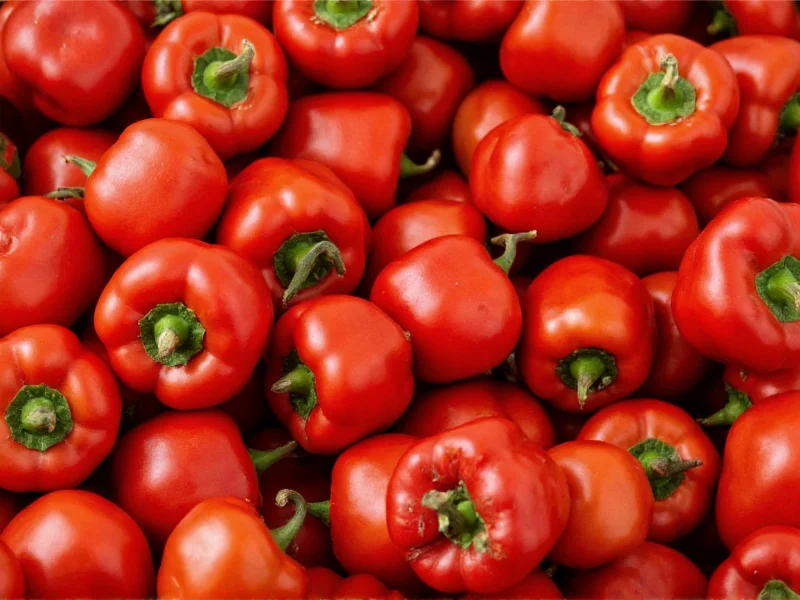Paprika might appear in your spice rack as a simple red powder, but its story spans continents and centuries. This globally beloved spice transforms dishes with its rich color and complex flavor, ranging from sweet and mild to deeply smoky and hot. Understanding what paprika comes from reveals not just a culinary ingredient, but a cultural tradition that connects ancient civilizations with modern kitchens.
Historical Journey of Paprika
While paprika as we know it today became prominent in Europe, its origins trace back to the Americas. Indigenous peoples in Central and South America cultivated chili peppers for thousands of years before Spanish explorers brought them to Europe in the late 15th century. The word "paprika" itself comes from the Hungarian adaptation of the Serbian word "papar," meaning pepper.
Hungary embraced this New World import with particular enthusiasm, developing distinctive cultivation and processing techniques that made Hungarian paprika world-famous by the 19th century. Meanwhile, in Spain, peppers were adapted to local conditions, eventually producing the sweeter varieties that characterize Spanish paprika (pimentón).
Pepper Varieties Used in Paprika Production
Not all peppers make suitable paprika. The spice primarily comes from specific varieties of Capsicum annuum, selected for their color, flavor, and thickness of flesh. These peppers undergo careful processing to preserve their distinctive qualities.
| Region | Primary Pepper Varieties | Characteristics |
|---|---|---|
| Hungary | Kulonleges, Csoments, Csemege | Bright red color, sweet flavor, varying heat levels |
| Spain | Ãnorra, Jaranda, Jariza | Sweeter profile, often smoked over oak wood |
| California | Sweet Bell Peppers, Anaheim | Milder flavor, primarily used for color |
The Paprika Production Process
Creating quality paprika involves several precise steps that determine its final flavor, color, and heat:
- Cultivation: Specific pepper varieties are grown in optimal conditions for maximum color and flavor development
- Harvesting: Peppers are picked at peak ripeness, typically when fully red
- Drying: Traditional methods involve air-drying peppers on strings or in special drying rooms; Spanish pimentón often undergoes smoking over oak wood
- Processing: Stems and seeds are removed before grinding to prevent bitterness
- Grinding: Dried peppers are milled into fine powder, with careful temperature control to preserve volatile compounds
- Blending: Different pepper varieties may be combined to achieve specific flavor profiles
The drying method significantly impacts the final product. Hungarian paprika typically uses sun-drying or air-drying, preserving the pepper's natural sweetness. Spanish pimentón often undergoes smoking, creating distinctive varieties like pimentón dulce (sweet), agridulce (bittersweet), and picante (spicy).
Regional Variations and Their Characteristics
Understanding what paprika comes from requires recognizing how geography and tradition shape this spice:
Hungarian Paprika
Hungary produces eight official classifications of paprika, ranging from mild to hot. The most prized varieties come from the Kalocsa and Szeged regions, where specific soil conditions and climate create peppers with exceptional color and flavor. Hungarian paprika generally has a fruitier, brighter profile compared to other varieties.
Spanish Pimentón
Spain's contribution to the paprika world features distinctive smoked varieties. The La Vera region in western Spain produces pimentón using traditional smoking methods over holm oak wood. This smoking process creates complex flavor compounds that distinguish Spanish paprika from other types.
Other Global Variations
While Hungary and Spain dominate paprika production, other regions have developed their own styles. California produces mild paprika primarily for color, while some African and Asian countries create unique regional varieties incorporating local pepper types and processing methods.
Culinary Applications and Flavor Profiles
Paprika's versatility makes it valuable across global cuisines. The specific peppers used and production methods create distinct flavor experiences:
- Sweet Paprika: Made from bright red, sweet peppers with no heat; ideal for adding color to dishes like deviled eggs or potato salad
- Smoked Paprika (Pimentón): Features deep, woodsy notes from the smoking process; essential in Spanish chorizo and paella
- Hot Paprika: Contains capsaicin-rich peppers; adds both color and heat to dishes like Hungarian goulash
- Sweet Hungarian Paprika: The most common variety worldwide; balanced flavor with subtle fruit notes
Chefs value paprika not just for its color but for how it enhances other flavors. Unlike many spices that dominate a dish, quality paprika integrates seamlessly, adding depth without overwhelming other ingredients. The best paprika varieties provide a subtle sweetness that complements rather than competes with other flavors.
Selecting and Storing Quality Paprika
Since paprika comes from ground peppers, its quality degrades faster than whole spices. To ensure you're getting the most from your paprika:
- Look for deep, vibrant red color - dull or brownish powder indicates age
- Check the production date when possible; paprika maintains peak quality for 6-12 months
- Store in an airtight container away from light and heat
- Buy from reputable sources that specialize in spices to ensure freshness
- Consider purchasing smaller quantities more frequently for optimal flavor
Fresh paprika should have a sweet, slightly fruity aroma. If your paprika has little to no scent or smells musty, it's likely past its prime and won't contribute meaningful flavor to your dishes.
Nutritional Benefits of Paprika
Beyond its culinary uses, paprika offers several health benefits derived from its pepper origins. The vibrant red color comes from carotenoids, powerful antioxidants also found in tomatoes and carrots. Paprika contains significant amounts of vitamin A, vitamin E, and capsaicin (in hotter varieties), which may support metabolism and circulation.
Research suggests that the compounds in paprika may have anti-inflammatory properties and could support eye health. While you'd need to consume substantial quantities to achieve therapeutic effects, regular use of paprika in cooking contributes to a diet rich in plant compounds that support overall wellness.











 浙公网安备
33010002000092号
浙公网安备
33010002000092号 浙B2-20120091-4
浙B2-20120091-4